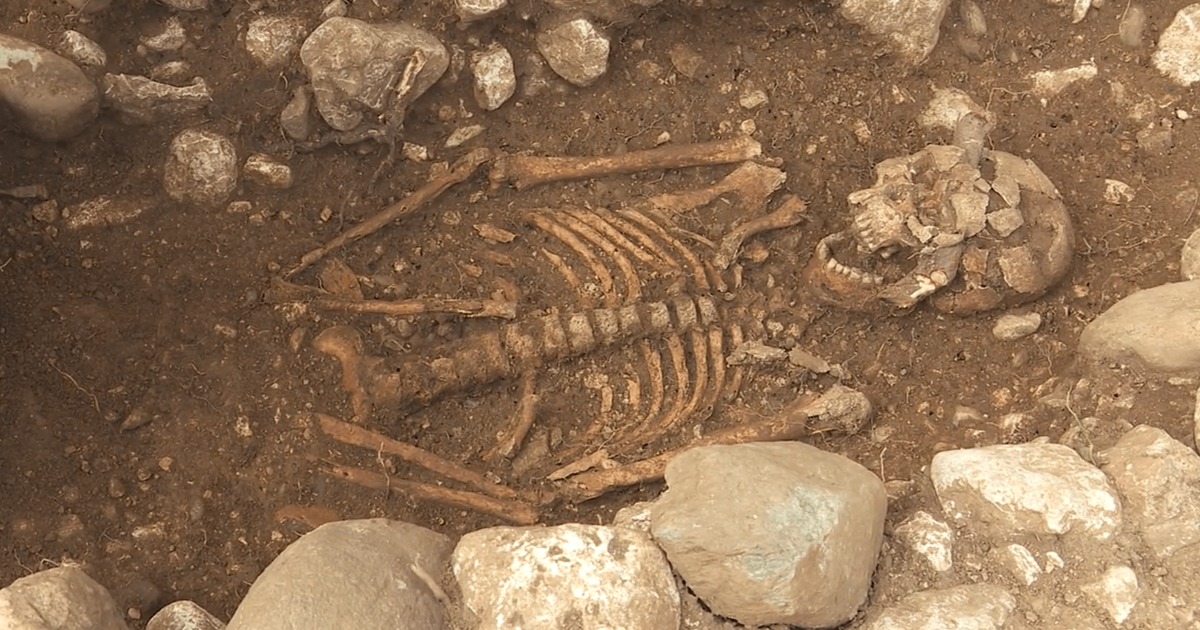The view is beautiful to die for. It almost overlooks Lake Bourget, in western Savoie. After four months of excavations, the National Institute for Preventive Archaeological Research (Inrap) completed Friday the study of a Merovingian site discovered this winter, ahead of a real estate development project in the town of Bourget-du-Lac, 10 kilometers from Chambéry. Researchers have unearthed a seventh-century cemetery. Populated by at least 80 individuals spread over about forty burials, it would be the most important Merovingian burial site in Savoy.
Despite the number of bodies discovered, little furniture has been preserved by the Savoy soil. "We have some elements of clothing, some adornments, but it is really insignificant compared to the number of burials," said our colleagues of France 3 the archaeo-anthropologist Julien Blanco, of Inrap. The position of the skeletons attests to the presence of coffins, now extinct and reduced to dust over the centuries.
See alsoLooting, treasures, detectives: archaeologists facing the Indiana Jones myth
Today located along the Route des Catons, on a hill in the commune, the cemetery has remained in operation long enough - a few decades at least - for several of its graves to be reused. Other burials also served as collective graves. Asked by L'Essor Savoyard, Inrap researchers said that the cemetery was well ordered, in several rows - testimony to the slow evolution of necropolises from Late Antiquity to the layout of parish cemeteries of the classical Middle Ages. In particular, archaeologists found pits where up to four individuals rested. In accordance with Christian funeral customs of the time, all bodies were oriented eastwards towards Jerusalem.
A first discovery in 1979
The details of the excavation site were only presented from the last days of the operation, in order to preserve the safety of the remains and not to attract possible looters. The site was carefully concealed behind white tents, in the greatest secrecy. The Inrap team only lifted the veil on the results of its research during the month of June, for a municipal school visit organized a few days before the European Archaeology Days. However, the construction site did not open its doors to the public on the occasion of this meeting.
" READ ALSO Under the Adriatic, in search of the sewn wrecks of the ancient world
As the researchers pointed out, the cemetery had already been very partially surveyed in 1979, after the discovery of some remains during agricultural work. At the time, before the birth of modern preventive archaeology, a rudimentary salvage excavation had already excavated three burials.
Now completed, the excavation operation will give way to the study phase of the furniture and human remains collected since February. The examination of the bones by the Institute's anthropologists could reveal new details about the Merovingians who died nearly 1400 years ago in the vicinity of Lake Bourget.

